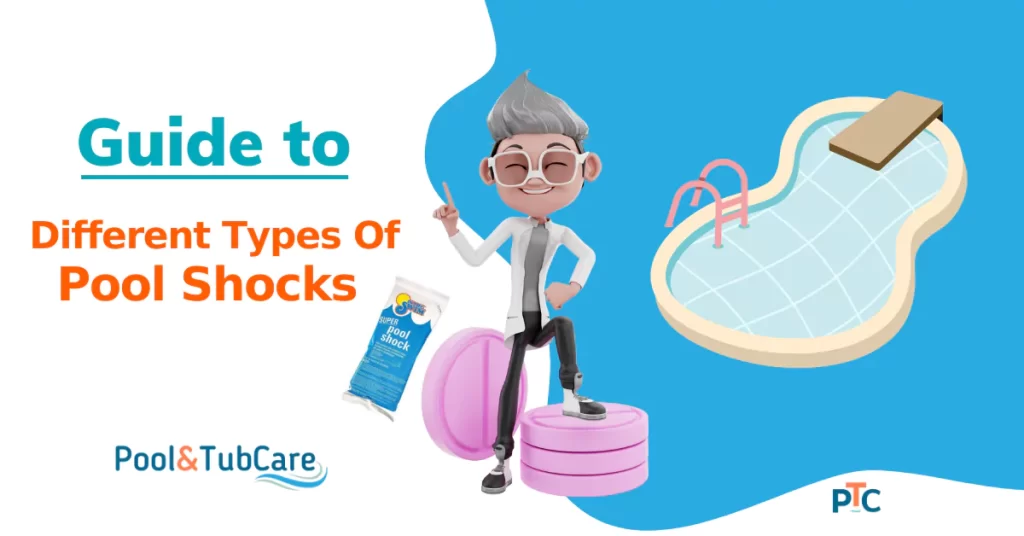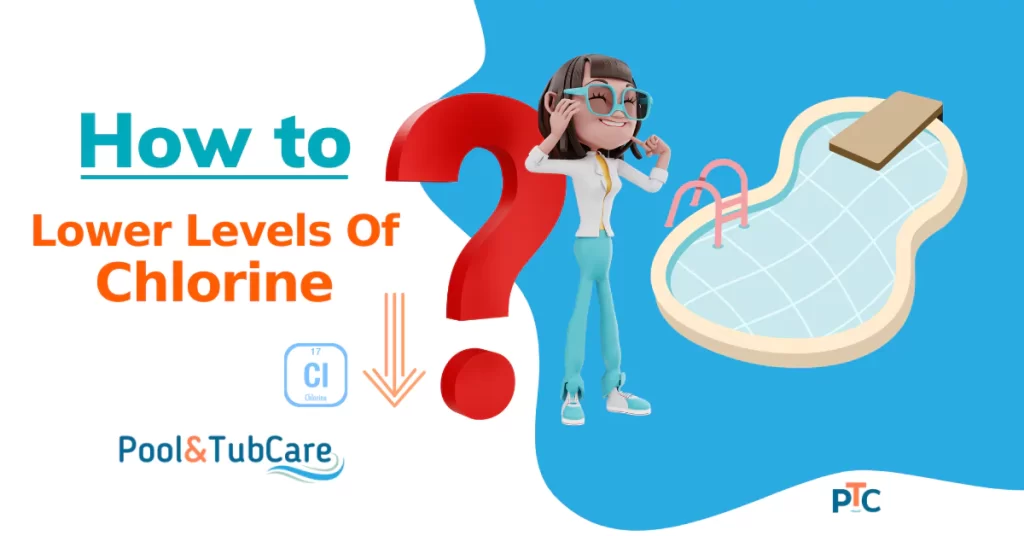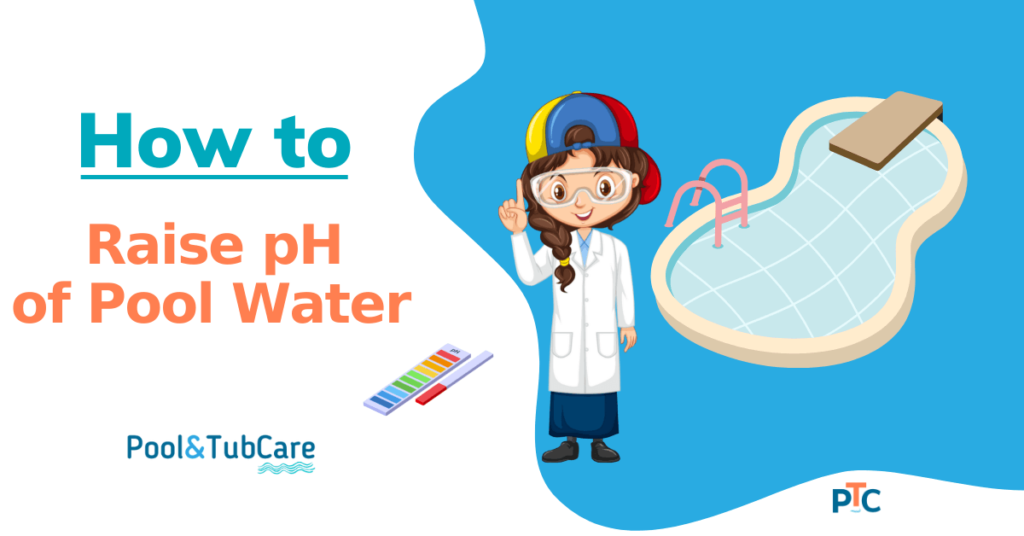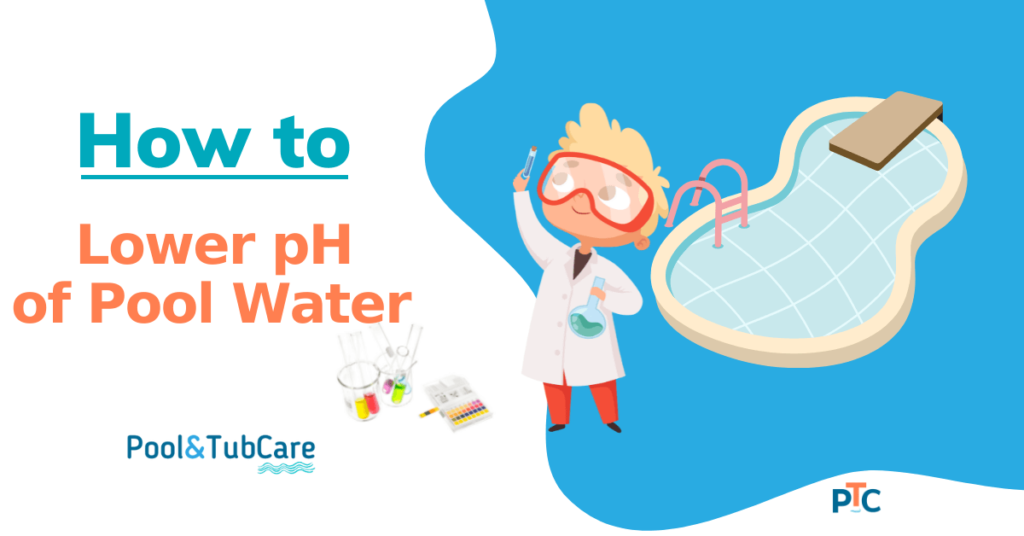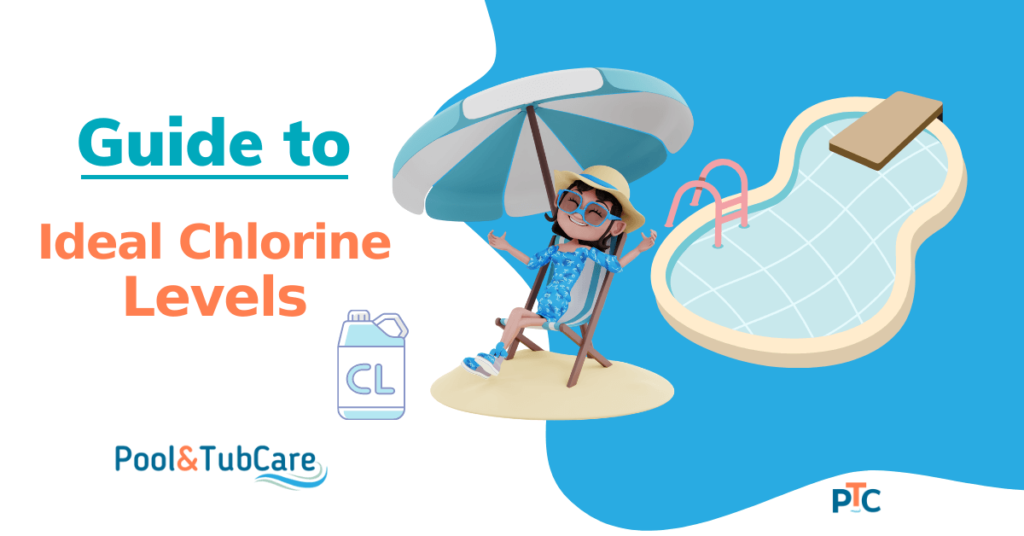Shocking is a routine every pool owner needs to follow. Shock is useful to counter algae, bacteria, and other pollutants in your pool. Shock is also used to meet chlorine demand and break down chloramines.
There are many types of shock available that might confuse anyone.
Selecting the shock that fulfills your pool requirement while taking care of pool chemistry (like calcium levels and pH) is essential.
If you choose the wrong one, you might amplify your problems rather than solve them.
There are three main types of shock you can select from i.) Calcium hypochlorite shock, is the most commonly used shock and contains 60 – 70% chlorine and comes in unstabilized powder form. It is not recommended if you have high calcium levels in the pool or in saltwater pools. ii.) Dichlor shock, contains 50-60% chlorine and comes in a stabilized form. It does not contain calcium but increases cyanuric acid levels. If your pool already has high CYA, it is not recommended. iii.) Non-chlorine shock, does not contain any chlorine and is useful for weekly maintenance. It can lower the pH and is not advised in case of lower pH reading in the pool. You can immediately swim after using non-chlorine shock, unlike other types where you must wait 12 to 24 hours.
Read on to learn everything about different shock chemicals available for pool shocking and how to choose the best for your needs.
What is Shock and How It Works
Shock generally means adding large amounts of chemical to the pool to kill any unwanted growth and break down chloramines.
This chemical is generally chlorine unless you are using non-chlorine shock. The non-chlorine shock uses potassium monosulphate to kill bacteria by oxidization.
Shock is used routinely to get rid of chloramines that build up weekly. Chloramines (combined chlorine) are formed when free chlorine neutralizes organic waste and combines with them.
As your chlorine does its job of disinfecting the pool every day, more chloramines keep on building up.
The peculiar smell you associate with pools is not from free chlorine but from chloramines. If you get a strong odor from the pool, that means there is not enough free chlorine, and the pool is not clean.
Shocking is required to bring down the chloramines. Chlorine-based shock is added in a huge amount, generally 10x of the combined chlorine levels, to reach the breakpoint of chloramines.
How often and When to Shock Your pool
If many swimmers use your pool regularly, you should shock it at least once a week, preferably after every pool party.
If you’ve noticed any of the following things, it’s time to shock your pool:
- Algae blooms
- Cloudy water
- Bad odors
- Water level change
- High levels of chloramines
- Severe rainstorm
- Spillage
- Human waste
You should shock your pool more often if you regularly use it. However, shocking it once every two weeks or so should be enough if you just use it occasionally.
You may need to shock your pool several times if you have severe algae problems.
Note: Shock your pool in the evening (if using chlorine-based shock) when the sun is down to avoid UV rays harming the chlorine and making the shock less effective.
In the evening, add the shocking chemicals and run the pump for at least 8 hours to allow the shock to mix in the water thoroughly.
Related: Ideal chlorine levels for your pool!
What Are The Best Pool Shocks for Swimming Pool
There are different types of pool shocks on the market, each with its advantages and limitations.
The two most common types of shocks are chlorine and non-chlorine.
1. Calcium Hypochlorite Shock
This is a chlorine-based shock that contains around 70% chlorine. It is very cheap and comes in the form of granules or powder.
That is the reason it is used by most pool owners. On top of that, it is very fast acting and effective at doing its job.
You need to pre-dissolve this shock before adding it to the pool, as it is tough to dissolve. If you add it directly to the pool, it may not get dissolved uniformly and can create high chlorine pockets leading to surface damage.
You must be careful not to add too much at once since this might harm your pool’s liner. It is not recommended for smaller and above-ground pools.
Always use this shock in the evening as it is unstable, and sunlight will reduce its effect.
Before swimming in the pool, you must wait at least 6-12 hours after adding the shock.
It can affect your pool chemistry. It increases the calcium level in the water, so if your pool has calcium hardness, try to look for other ways to shock your pool. For that reason, it is not recommended for saltwater pools where scale build-up can happen pretty fast.
It also increases the pH but does not affect the cyanuric acid levels as it is unstabilized.
It is one of the best options when dealing with a green pool from an algae bloom. But depending on the amount of algae, you might need to use it more than once.
2. Lithium Hypochlorite Shock
This option might suit you if available in your local store.
Lithium hypochlorite is another chlorine-based (35%) shock that is available in powder or granular form.
Although it costs a little more than calcium hypochlorite, it dissolves much easier, and you don’t have to dissolve it before adding it to the pool.
As it dissolves fast and does not leave granules behind to damage surfaces, it is a better option for pools with vinyl liners or fiberglass.
It won’t raise the calcium or pH of the pool. So in case your pool is already suffering from these imbalances, you can choose this shock.
Lithium is the best choice for shocking your pool to prevent an algal bloom because it is toxic to algae.
But it is expensive and not readily available due to the high demand for Lithium in other industries.
3. Sodium Dichloro-S-Triazinetrione Shock
This shock is 60% chlorine-based and dissolves fast. It is also known as “Dichlor.” It is a very potent oxidizer that will take care of organic pollutants from your pool’s water.
Dichlor is a stabilized chlorine and contains CYA, if your pool already has high levels of CYA, then this might not be the best option.
Be sure to thoroughly read and follow the instructions on the packaging before using this type of shock.
You can add it immediately to the water; there is no need to dissolve it first. After adding, you need to wait for 6 to 12 hours before using the pool.
It can also be used for saltwater pools.
4. Potassium Peroxymonosulfate Shock
This shock is a non-chlorine shock and is also called “ShockOx.”
It works by oxidizing the water and breaking down organic pollutants in water.
This chemical is highly effective and keeps the chlorine levels in your pool from rising.
It was a little more expensive than shocks made of chlorine earlier, but there is not much difference now.
Using it around swimmers and pets is also safe. This is a better option if you want to use your pool immediately after the shock.
This is recommended as a weekly shock for well-maintained pools. It is also the perfect option for smaller above-ground pools where chlorine-based shock cannot be used.
Although it is suggested for shocking saltwater pools, you cannot use it as an algaecide because it does not work on algae.
Related: How to lower chlorine levels in the pool!
Different Forms of Shock
You can find the shock in all the forms.
Granule form:
This is the most common form of shock and comes in small bags of buckets. Cal-hypo and dichlor come in granules form. You need to dissolve cal-hypo in a bucket before adding it to the pool. Other you can add directly.
Make sure to read the manufacturer’s instructions and follow them.
Liquid form:
You can also use sodium hypochlorite to shock the pool, and it comes in the form of liquid similar to your household chlorine. The active form of chlorine is around 15% in liquid chlorine, and it is unstabilized.
This is less potent than the cal-hypo shock, but you don’t need to mix it. Add it to the pool, and let the water circulate for some time. It can be dangerous for your skin if touched directly, so take precautions.
Tablet form:
This option is available but is rarely used as it is the slowest of them all. Tablets take a lot of time to dissolve, you can crush them to increase the dissolving speed.
This is not recommended, as the high pockets of chlorine concentration around tablets can damage the pool liners and plaster.
Other Things to Consider When Using A Shock
You also need to take care of a few other things like:
Stabilized vs. Unstabilized Shock
You have both options (stabilized and unstabilized chlorine) available. Stabilized shock contains cyanuric acid, and it increases its levels after use. Cyanuric acid protects chlorine from the sun, and this type of shock can be used during the day. Dichlor is the most common stabilized shock.
If your pool already has high cyanuric acid levels, you might want to use unstabilized shock without CYA. Just make sure to use it at night so that it is effective.
Cal-hypo is the most used unstabilized shock for regular maintenance without increasing stabilizer levels.
Type of Pool
You need to consider the type of pool you have. For example, if you have a saltwater pool, you need to weigh your options.
Saltwater pools also use chlorine as a source of sanitization, but you don’t need to add it. They use a chlorinator to make chlorine from the salt present in the water.
You can just change the setting to super chlorination to increase the chlorine levels to work as a shock.
But still, you will need to shock your pool with chlorine sometimes, like every alternate week. But normally recommended cal-hypo is known to cause calcium or scale build-up in saltwater pools, so dichlor shock is advised.
And in case you have high CYA levels, you can use non-chlorine shock for regular maintenance. But for dealing with algae, you need to use old-fashioned cal-hypo shock.
If you have a small or above-ground pool, standard chlorine shock is not recommended as routine because chlorine can damage your pool lining. In that case, use non-chlorine shock.
pH levels
Before deciding on which shock to use, you should consider the pH levels in your pool. Some pools are more prone to get lower pH and others to higher pH depending on the overall chemistry of the pool.
If your pool generally has the pH on the higher sides or the boundary of the higher side, you can avoid using the shock that further increases the pH, like cal-hypo.
Sodium hypochlorite and tablets can significantly reduce the pH of your pool water.
Make sure to test the water after using shock so that it is in the perfect range of 7.2 to 7.6. Lower the pH if it is higher than 7.6 with chemicals like muramic acid, or raise the pH if it is lower than 7.2.
Otherwise, it may lead to chlorine ineffectiveness and skin problems like itching, and red eyes, among others.
Solubility of Shock
Different types of shock take different times to get mixed in water.
There is no problem with mixing for liquid shock; you can just add it to water, and it will get mixed almost instantly with circulating water.
Granules take a little more time. Especially, cal-hypo is difficult to dissolve, and you need to pre-dissolve in a bucket of water before adding it to the water.
On the other hand, dichlor shock can be added directly to the pool as it dissolves quickly. While using any of these shocks, follow the instructions provided with the package.
Tablet shock is the most difficult to dissolve, and it may take hours before tablets fully dissolve in water.
Swimming in water with freshly added granules or tablets is not recommended.
Algae Growth
If you are shocking your pool to get rid of algae, you can not use non-chlorine shock as it will not kill algae.
You need to use either cal-hypo shock, which is best for eliminating algae, or you can use dichlor shock if you have high calcium levels in the pool.
Depending on the type of algae and how much growth is there, you need to decide on the amount of shock.
If the algae are green and have just started growing, then a normal 1x sock will suffice. But if there is huge growth or you are dealing with yellow algae, you need to triple-shock the water to clear your water.
Black algae are the most resistant ones and may need a higher dose of shock.
Chose The Right Shock As Per Needs
You need to choose the shock which serves your need and not the reputation. Now you know the benefits and drawbacks of all pool shock types, decide which one suits your requirements best.
If you have an algae problem, use cal-hypo shock. For regular weekly maintenance to keep things under control, use non-chlorine shock.
For saltwater pools, use dichlor or non-chlorine shock.
Check your pool chemistry, like calcium levels and alkalinity, before deciding which shock will do the job without changing other chemical balances.
After shocking also test the water chemistry so that everything is perfect before you take a dip in the pool.
FAQs About Types of Pool Shocks
Here are a few frequently asked questions.
What are the different types of shock for pools?
There are different types of shocks. Mainly you will be using cal-hypo, dichlor, and non-chlorine shock based on the needs of your pool.
What is the best shock to use in my pool?
There is no straight answer to this question. The best shock for your pool will be decided on the pool’s needs and why you are shocking your pool. If you are doing it for regular maintenance to keep the pollutants away, then the non-chlorine shock will be best for your pool. But the cal-hypo shock will be best for your pool if dealing with an algae bloom. If your pool has high calcium levels or a scaling problem, dichlor shock will be your best option.
Which is better, liquid or powder shock?
Liquid shock is easy to dissolve and can easily be added to your pool without dissolving in the bucket. But liquid shock contains less active chlorine (15%) than the cal-hypo shock (70%); therefore, liquid shock is less potent. To get the same effect as powder shock, you need to add a huge amount of liquid chlorine. Powder shock is recommended if you are dealing with serious waste issues, as it can clear things very quickly.
What happens if you put too much shock in a pool?
If you add too much shock for once, it may not cause a problem. But if you regularly add too much shock, it can imbalance the water chemistry, such as pH and alkalinity, and lead to cloudy water and other problems. Always check water chemistry after each shock.
Is pool shock just bleach?
Although the ingredients of both are chlorine, they are very different in terms of concentration. Household bleach has less chlorine concentration than pool shock and should not be used in the pool.
How often should you shock your pool?
You should shock your pool almost weekly with non-chlorine shock in pool season and every time after very heavy use. This will keep your pool water free from chloramines and any build of bacteria or other pollutants. In case of algae growth or heavy rains, shock your pool with a chlorine-based shock.
Are chlorine and shock the same thing?
Most shocks are chlorine-based, but some shocks are not chlorine based, like ShockOx. Also, your chlorine-based shock contains a very high dose of chlorine compared to the chlorine you use for regular sanitization.
Does shock raise pH?
Most of the chlorine-based (cal-hypo) shocks will increase the pH and alkalinity. So make sure after shocking to test the water and balance the chemistry.
Will Shocking a pool clear cloudy water?
Most of the time, cloudy water is due to waste accumulation caused by chlorine deficiency. When you add shock, it will provide free chlorine to clear the waste and cloudy water. If still, your water is cloudy, you might have other problems like pH or alkalinity imbalance.
What do you do after you shock your pool?
After adding the shock circulate the water properly by running the pump and wait for 6-12 hours to clear the shock before swimming in case of chlorine-based shock. If using non-chlorine shock, you can use the pool after 15-20 minutes of adding the chemical.
What happens if you don’t shock a pool?
If you don’t shock the pool regularly, the chloramines will keep building, overpowering the free chlorine, and your pool will not be clean. Besides water becoming cloudy, many kinds of bacteria and algae can grow in such water.

